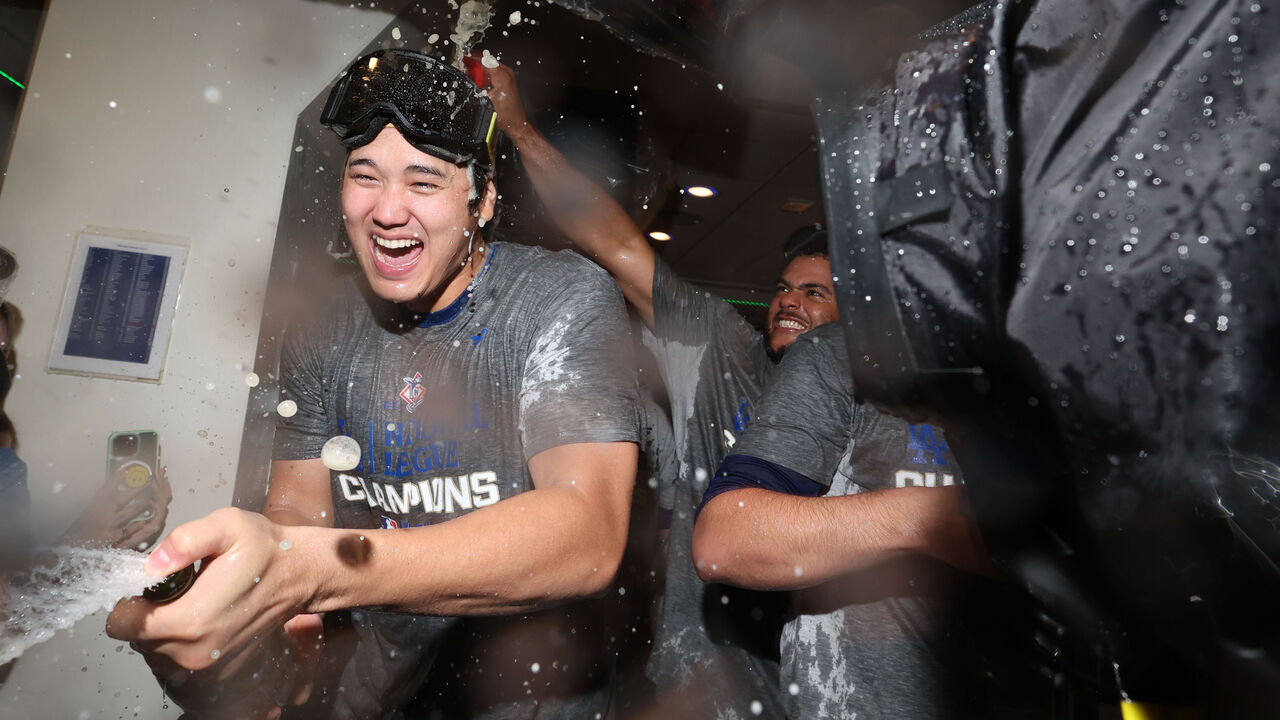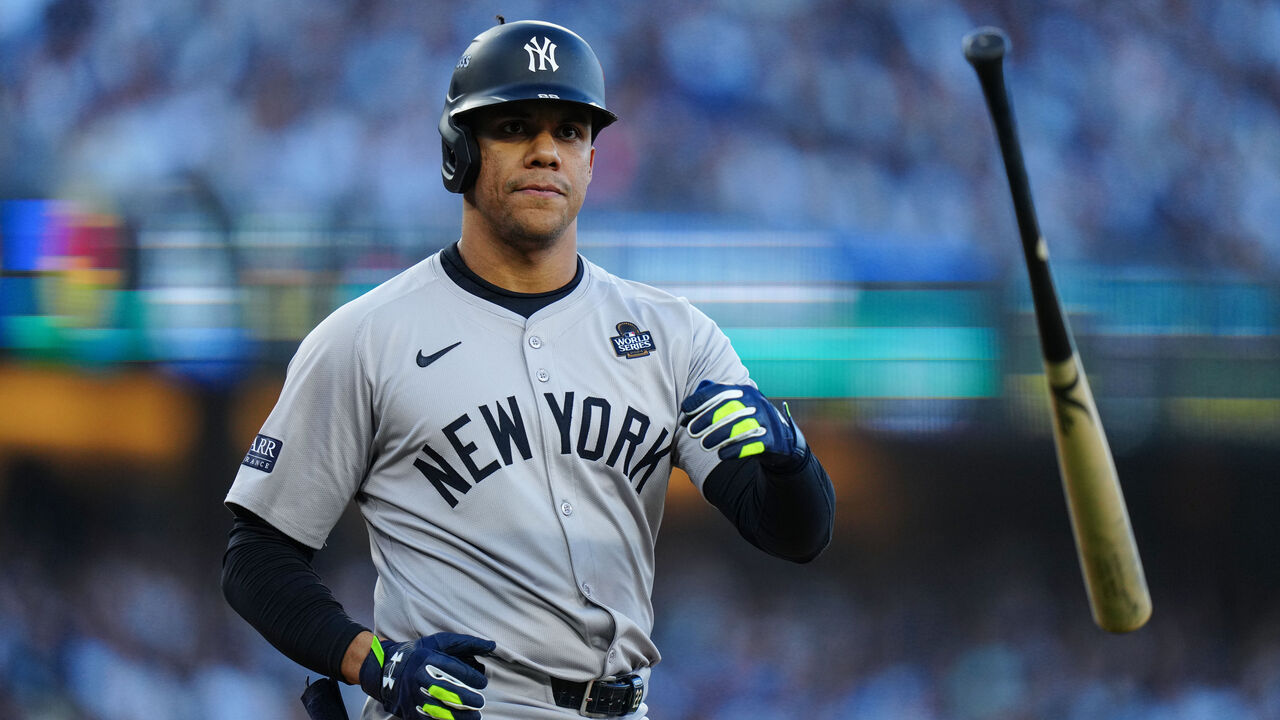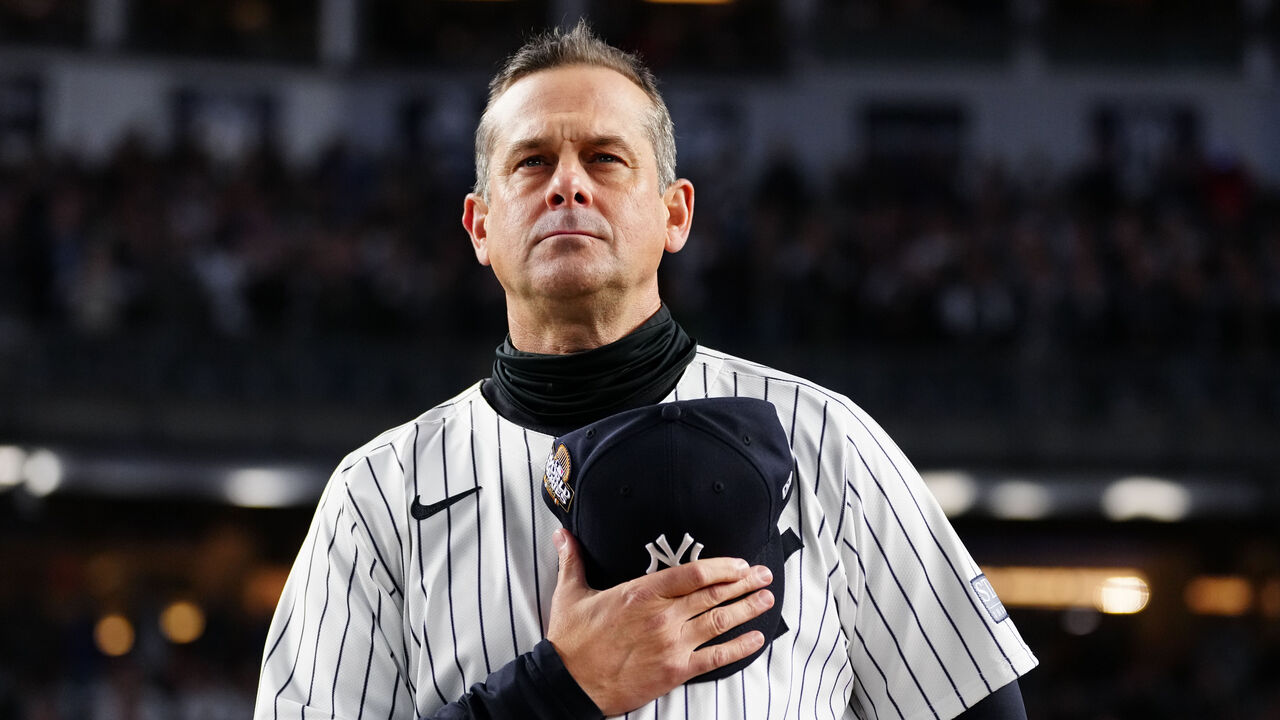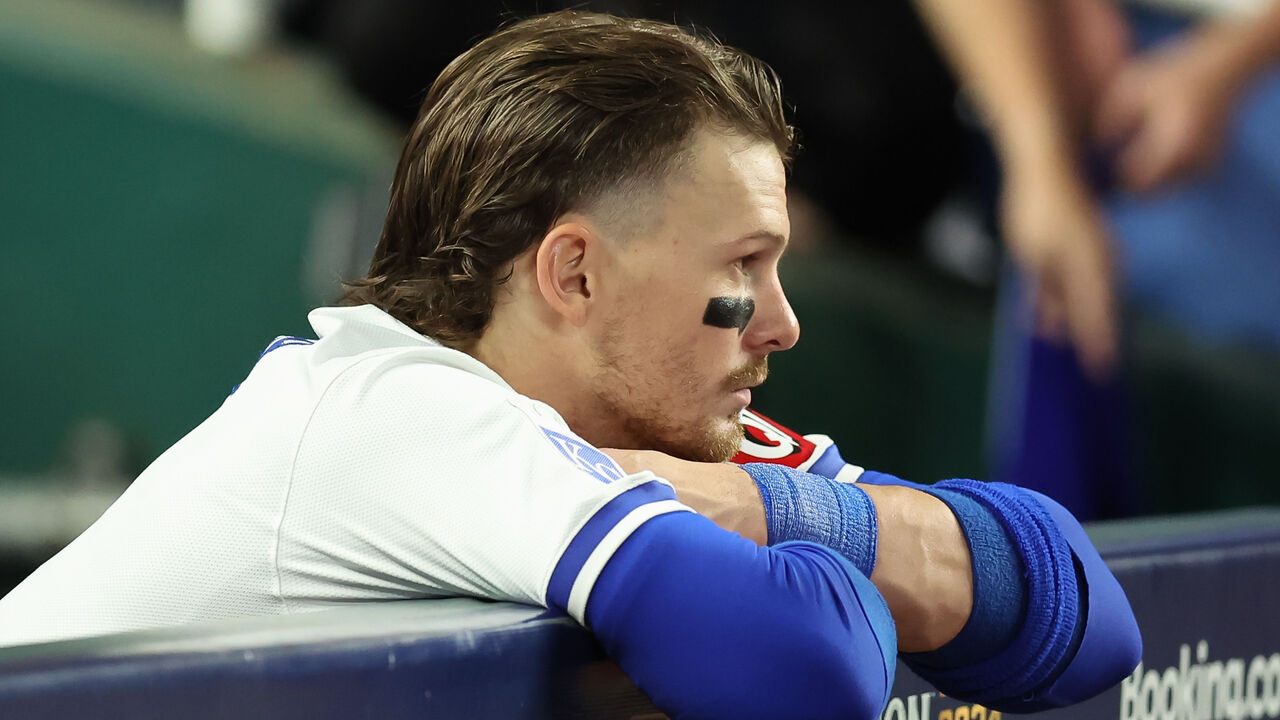New Dodgers dynasty begins, and lessons for all the October teams
Haters can no longer place an asterisk on this era of Los Angeles Dodgers baseball.
These Dodgers are now more than short-season champions after clinching their first full-season World Series title since 1988 on Wednesday, adding to their 2020 COVID-year title. And this championship feels like it may be the start of something larger.
The last team to win consecutive World Series were the 1998-2000 Yankees, and these Dodgers feel like the rare team that could pull off the feat.
What's concerning if you're a fan of any other MLB club - including the Yankees - is how the Dodgers were able to win this fall. They did it with one arm tied behind their back, which isn't a reference to Shohei Ohtani's injured left shoulder.
Consider that the Dodgers reached baseball's pinnacle at far from full strength.

They used the second-most pitchers this season (40) and were without starters Tyler Glasnow and future Hall of Famer Clayton Kershaw for the entire postseason.
The Dodgers will almost certainly be a lot stronger on the mound next season, especially if they land another Japanese ace in Roki Sasaki this winter. Oh, and Ohtani will be back on the mound next year.
They'll look to get better elsewhere, too.
Some of that improvement could be internal. The Dodgers enjoy a top-five farm system, according to some rankings. They've maintained a rich pipeline even with their on-field success thanks to one of the game's best scouting and player development operations.

The Dodgers have essentially become the Tampa Bay Rays - only with four times the payroll capacity, allowing them to fill voids in their development output with superstars.
Free agency often involves landmine contracts for clubs, but the Dodgers have largely avoided those. They've spent wisely.
The Dodgers won last offseason by signing Ohtani and Yoshinobu Yamamoto. With health, both are long-term superstar fixtures.
They signed World Series MVP Freddie Freeman to a six-year, $162-million deal prior to the 2022 season.
Red Sox fans remain haunted by the Mookie Betts trade and the 12-year, $365-million extension he signed in L.A.

For comparison, the Yankees signed Carlos Rodón to a six-year, $168-million deal prior to last season. Rodón's a fine pitcher when healthy, but Freeman's supplied far more value for the same price.
The Dodgers also don't have any bad money on their long-term books. Players they have under contract in 2027 include only Glasnow, Yamamoto, Betts, Freeman, Ohtani, and catcher Will Smith. The deferred money on Ohtani's contract gives them more financial flexibility than their luxury tax-sized payroll suggests.
Yes, it's difficult to build a baseball dynasty. Baseball enjoys structural parity through expanded playoffs. This is a sport that determines a champion through small-sample series, but requires large samples to determine true talent.
Michael Lopez, now the NFL's senior director of football data and analytics, once found MLB would need a best-of-75 series for the better-seeded team to match the advance rate that a better-seeded NBA team enjoys in a best-of-seven series (which he found was best of 11).
As evidenced by the Dodgers, who've made 16 postseason trips since 2004 but have only two titles. Still, one can argue these Dodgers are at a new, greater level than at any point this century. They're as rich and well-run as any club can be.
Soto's now in charge
While the Dodgers' arrow is pointing up, the Yankees have immediate problems, including one major issue: Juan Soto's a free agent.
Soto gave no indication after Game 5 that he's leaning toward returning.
"I feel like every team has the same opportunities when I go into free agency," Soto said. "I don't want to say anyone has an advantage because at the end of the day, we're gonna look at what they have and how much they want me."

Soto, represented by agent Scott Boras, is likely placing pressure on Yankees ownership, as New York enjoys the greatest revenues in the game.
The Yankees should be highly motivated to retain him. Aaron Judge will be 33 next year and Giancarlo Stanton 35. Soto will be in his age-26 season next year. He's the foundational piece they need to retain.
Where he signs could have a dramatic impact on next October.
A series of unfortunate events
When Betts slashed a ground ball to first base with the bases loaded and two outs in the fifth inning Wednesday, it seemed to be the end of the threat to New York's 5-0 lead. It seemed very likely the Dodgers would head back to L.A. in a few hours with pressure mounting on them to avoid an epic collapse.
Instead, baseball fans witnessed the capper to one of the greatest meltdown innings in World Series history.
As the ball bounded toward Anthony Rizzo at first base, Yankees pitcher Gerrit Cole remarkably stopped moving, and neglected to cover the base. The ball had extra English off the end of Betts' bat, so Rizzo collected the grounder flat-footed rather than advancing to the base.
The ball left Betts' bat at 49.8 mph, a routine grounder with a .110 expected batting average. It went as a single.
The score was tied a few minutes later.
The @Dodgers get on the board in Game 5. #WorldSeries pic.twitter.com/Mif4HgFsoO
— MLB (@MLB) October 31, 2024
Cole explained afterward he "took a bad angle to the ball. I wasn't sure off the bat how hard he hit it."
But the ball was already beyond a perpendicular plane to Cole when he began to move. Cole appeared to assume Rizzo had it, as did many in the audience.
That specific situation is practiced early every spring training. The pitcher's supposed to run to first base until it's clear his assistance isn't needed. It's never a good look when a manager is asked about pitcher fielding practice after an elimination game.
The Yankees left baseball fundamentals at the door tonight. Truly embarrassed for them!
— Roy Oswalt (@royoswalt44net) October 31, 2024
It erased a great game and series from Cole. The Dodgers had a deeper lineup, but Cole was the Yankees' greatest advantage in the series and performed like it.
After defensive errors by Judge and Anthony Volpe put the Yankees in jeopardy, Cole reached back to hit 99 mph five times in back-to-back strikeouts of Gavin Lux and Ohtani with the bases loaded. He hit 99 mph only once in the regular season. He emptied the tank physically in an inning in which he threw 38 pitches. Did that extreme physical exertion contribute to his mental gaffe?
The Yankees also had the first catcher's interference call in a World Series game since 1982, while Luke Weaver exceeded the throw-over limit to first base, seemingly forgetting the rule.
It was a continuation of New York's poor postseason play.
The Yankees compiled so many baserunning miscues in the ALCS that longtime radio voice John Sterling said they "run the bases like drunks" on air.
The Yanks beat themselves as much as the Dodgers did.
Boone's poor postseason
It wasn't a great postseason for Yankees manager Aaron Boone, and it went beyond sloppy play. It suggested a lack of preparation.
One of the more curious decisions of the postseason - and the most damaging - was when he called upon Nestor Cortes to pitch in the 10th inning of Game 1.
Not only had Cortes not pitched since Sept. 18, he was one of the weakest pitching options the Yankees had. By some Stuff+ measures, his pitch quality was nearly 30% worse than the average postseason pitcher.
Cortes made a location mistake to Freeman, who hit his game-winning grand slam. By some measures, it was the most consequential and damaging pitching decision in the postseason.

The Nestor-Freeman plate appearance result reduced the Yankees' chances of winning a title by 23 percentage points, according to Baseball Reference's Championship Win Probability Added statistic (cWPA), which measures how a player's performance impacts his team's chances of winning the World Series.
It was the biggest probability swing of any plate appearance in the postseason, and the third biggest in any playoff game since Boone became manager in 2018.
Eight of the 20 biggest pitcher-vs.-batter cWPA outcomes of the postseason involved Yankees pitchers, and six were relievers.
Mookie said it
Betts, who kept his initial thoughts muted, told the world how he truly felt about the pair of Yankees fans who ripped the ball from his glove in Game 4 after Game 5:
"That was, like, the second time in my life I've ever wanted to fight somebody," Betts told FOX's postgame show.
"Well, A for effort."
— FOX Sports: MLB (@MLBONFOX) October 30, 2024
Fan interference was called on this play where a Yankee fan tried to take the ball out of Mookie Betts' glove after an out. pic.twitter.com/iZ6taImncd
Betts was put in harm's way, which is unacceptable. And such fan behavior potentially ruins it for everyone. Too many more events like that and plexiglass additions will be installed atop MLB stadium walls.
Signature October for baseball
While a Yankees-Dodgers series of six or seven games would have made this a dream postseason for MLB, the ratings for Game 1-3 were still the best since 2017 and 2018. Game 3 even outperformed Monday Night Football.
Game 4's audience, topping out at 18.2 million in North America, was the best since 2016. Millions more watched in Japan.
In fact, the World Series had more viewers through Game 4 than last year's NBA Finals.
Overall postseason interest was the best in years, fueled by stars and compelling LDS and LCS games.
After two years of regular-season attendance gains following the pitch clock addition and other rules changes, perhaps this postseason can give the sport further momentum with fans.
Time for the robots
The next great MLB improvement will be a ball-strike challenge system - and it can't arrive soon enough.
When the Yankees briefly retook the lead in the sixth inning Wednesday, it was made possible in part because Judge walked despite seeing five strikes, according to pitch tracking.
While it's not easy to call balls and strikes, error rates of nearly 10% shouldn't be acceptable in postseason play.
Umpire Doug Eddings (ranked 60th of 90 umps) missed 15 calls in Game 4 of the World Series.
— Umpire Auditor (@UmpireAuditor) October 30, 2024
His correct call rate of 90.7% matched the 88th ranked Rob Drake#Yankees #Dodgers #WorldSeries pic.twitter.com/WwzXPC6zBC
MLB commissioner Rob Manfred said there will be experimentation with the challenge system at spring training.
What postseason lessons were learned?
There weren't any new sweeping new developments in how postseason games were won this October.
Home runs were again king: they're the most efficient way to score runs, especially as the caliber of pitching improves in the postseason and it's harder to string hits together.
Elite starting pitching is never going to go out of style.
Bullpens again played a heavy role, but perhaps we saw teams pushing relievers too far.
Outside the macro lessons, what can some of the other playoff clubs take from their experience?
Guardians: The club can't rely on a bullpen to pitch 61% of postseason innings, no matter how elite it is. Cleveland must find a way to add more rotation depth this winter - and on a budget.
Tigers: By our Scrooge Index, Detroit had one of the lowest shares of revenue going into player payroll in 2024. While it was an unexpected year of contention, ownership must help fill voids around this emerging young group.
Royals: Kansas City had the 20th-ranked lineup by wRC+ this season and was 20th in home runs. Bobby Witt Jr. needs help. Power's paramount in October.

Orioles: This offseason is all about adding pitching, pitching, and more pitching. The internal options haven't been good enough on the postseason stage.
Astros: Their window's closing but a short-term deal with a Shane Bieber-type arm could help pry it open.
Phillies: Philadelphia remains a complete team, will return its stars, and is still a shining example of the postseason's extreme variance. Some good news: Top pitching prospect Andrew Painter is hitting 99-100 mph in the Arizona Fall League.
Padres: They're in great position with several superstars under contract and frontline starters Dylan Cease and Michael King returning. They could use another bat to challenge the Dodgers for lineup depth and quality, and another high-impact bullpen arm.
Brewers: Closer Devin Williams is likely a trade candidate this winter as he enters his final year of club control. While he gave up a season-ending homer to Pete Alonso, the Brewers leaned on an elite bullpen like Cleveland and need to find new high-leverage arms.
Mets: Sign Soto.
Braves: Atlanta must figure out what exactly happened with its curious power outage in 2024, but getting Spencer Strider healthy for 2025 is one of the greatest internal improvements possible. More than most clubs, the Braves can count on some positive regression to the mean.
Travis Sawchik is theScore's senior baseball writer.